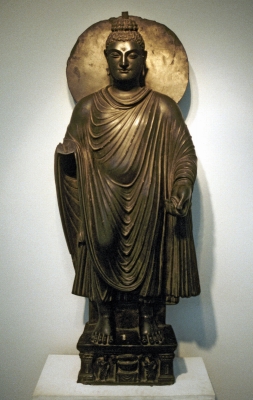
Gandhara art, style of Buddhist visual art that developed in what is now northwestern Pakistan and eastern Afghanistan between the 1st century BCE and the 7th century CE. The style, of Greco-Roman origin, seems to have flourished largely during the Kushan dynasty and was contemporaneous with an important but dissimilar school of Kushan art at Mathura (Uttar Pradesh, India).
The materials used for Gandhara sculpture were green phyllite and gray-blue mica schist which in general, belong to an earlier phase, and stucco, which was used increasingly after the 3rd century CE. The sculptures were originally painted and gilded.
Gandhara’s role in the evolution of the Buddha image has been a point of considerable disagreement among scholars. It now seems clear that the schools of Gandhara and Mathura each independently evolved its own characteristic depiction of the Buddha about the 1st century CE. The Gandhara School drew upon the anthropomorphic traditions of Roman religion and represented the Buddha with a youthful Apollo-like face, dressed in garments resembling those seen on Roman imperial statues.
Picture Credit : Google

